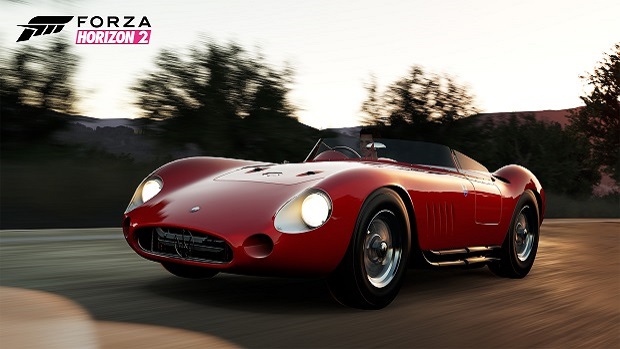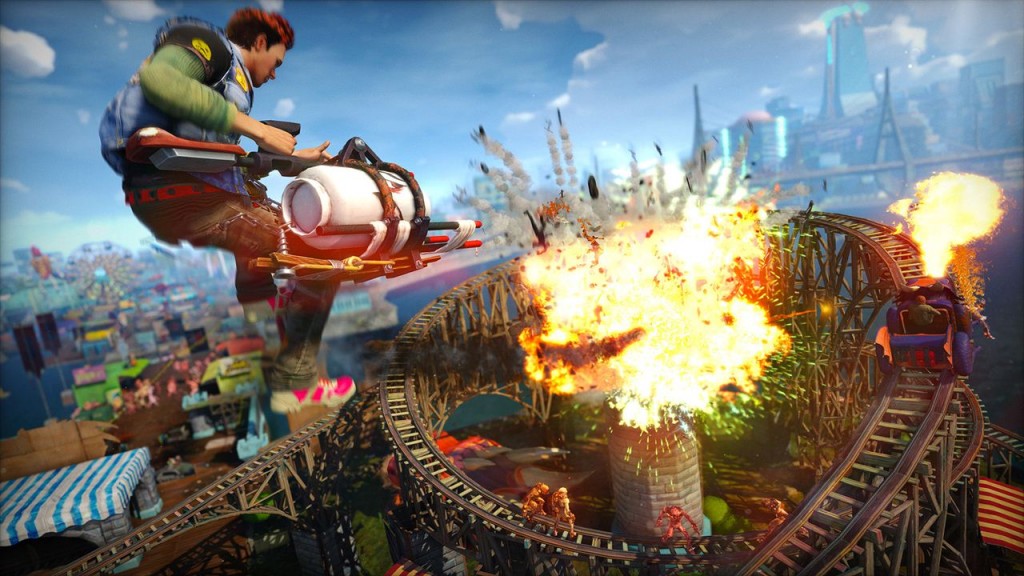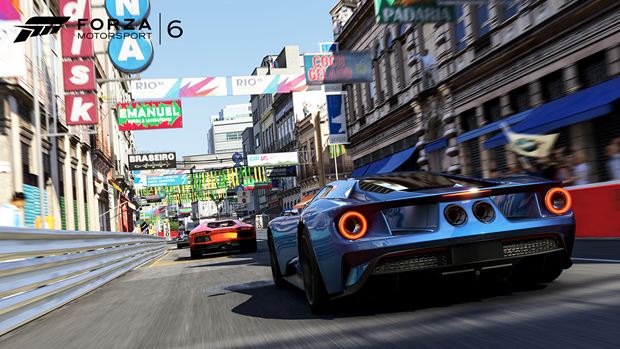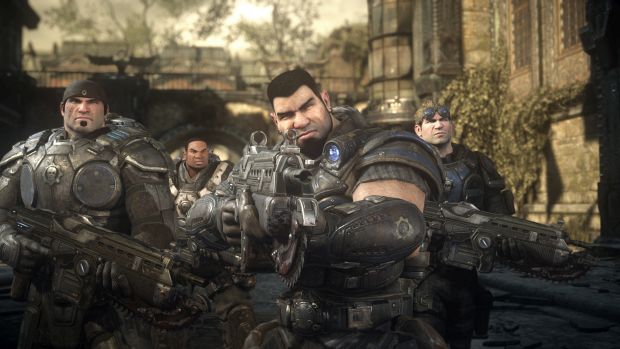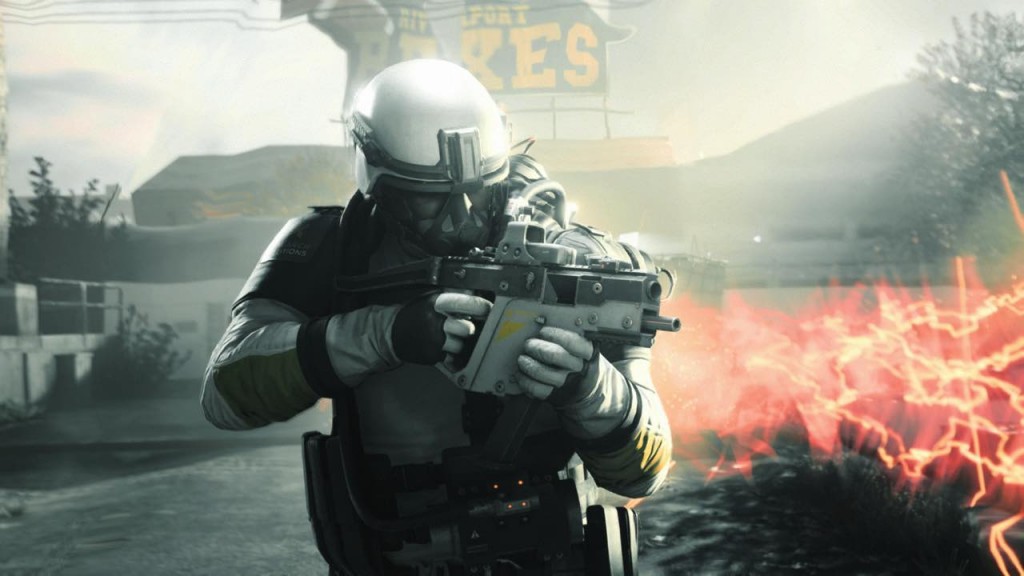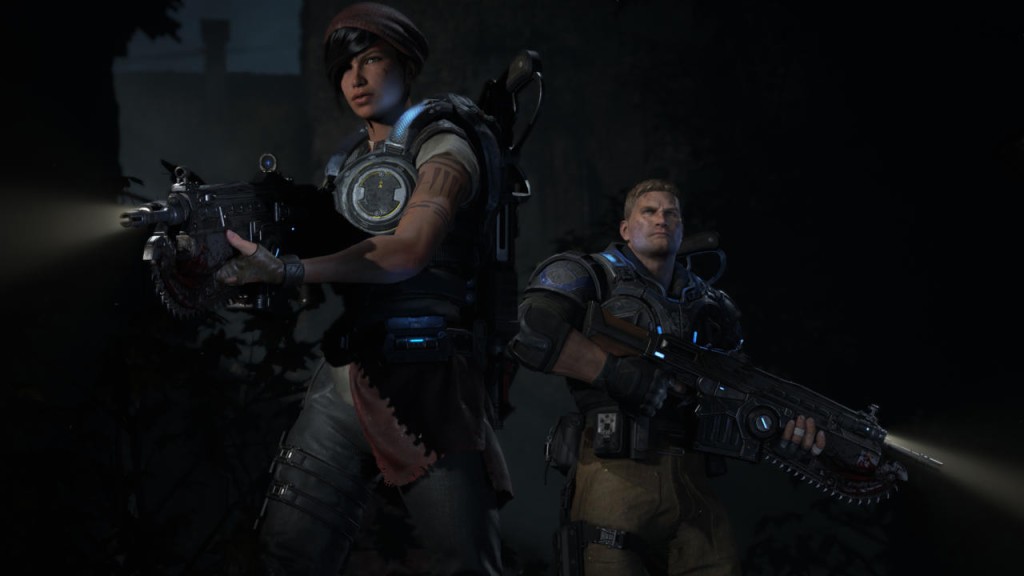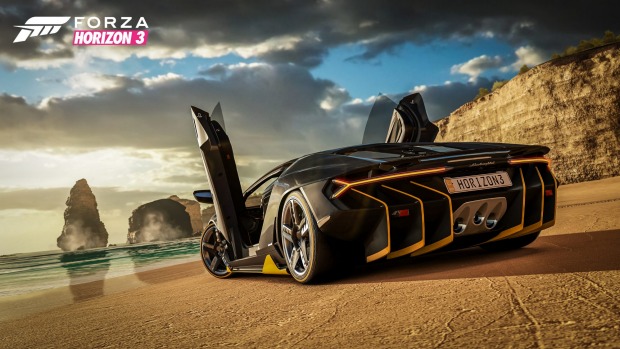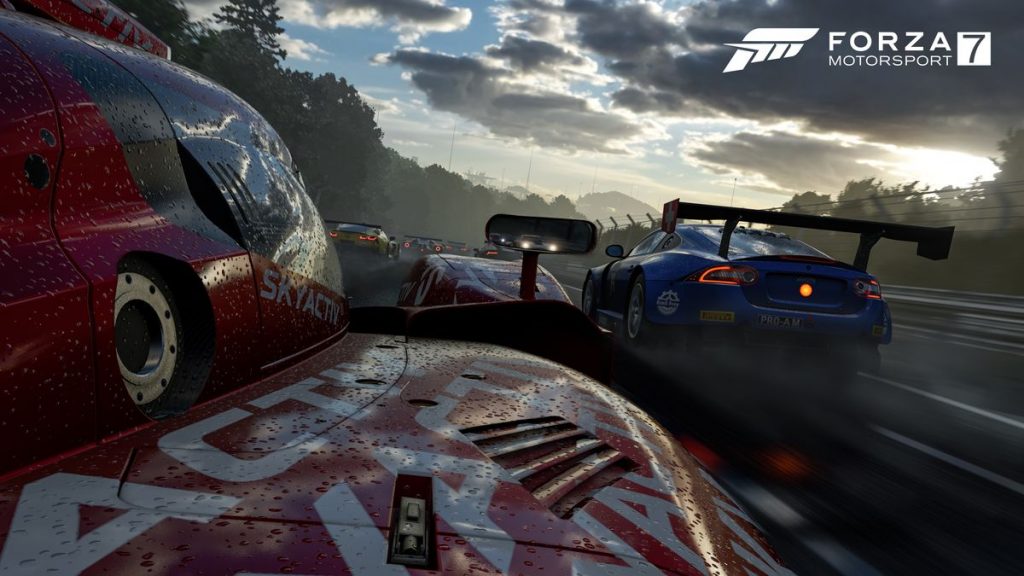
Earlier, we had a look at console exclusives on Sony’s platform and how first and second-party devs were able to utilize Playstation hardware to create some stunning visuals in realtime. While Sony can perhaps lay claim to a larger selection of iconic IPs, from Uncharted to Infamous, Microsoft hasn’t been standing idle. Microsoft’s been spending heavily on tie-ups and exclusivity offers, meaning that Xbox is now more than just a platform you’d play Halo on. In this feature. we’ll be exploring Xbox exclusives from the 360 era all the way up to prospective next-gen titles set to launch in 2020 and beyond. Let’s kick things off by looking at the best exclusives on Xbox 360.
In the seventh gen, the PS3 was widely hailed as having the best exclusives. Nevertheless, the Xbox 360 had plenty of great exclusives, some just as iconic and innovative as the best from Sony’s stable. From Halo 4 to Alan Wake to the Gears of War series, plenty of 360 titles have pushed the system into uncharted territory. Halo 4, for instance, 343’s late-gen swansong had such stunning visuals that the 1080p version of the game found in the Master Chief Collection compares favourably to Halo 5 on the Xbox One. Alan Wake made use of the Xbox 360’s hardware support for anti-aliasing to offer smooth image quality even while running at a measly 960×540. There was a reason the title ran at such a low resolution: Atmospheric dynamic lighting and incredible volumetric effects and post-processing combined to create a cinematic spectacle that only Remedy themselves would top with Quantum Break, years later.
And then, of course, there was the Gears of War franchise. It’d be hard to choose between Marcus Fenix and the Master Chief if you were selecting a mascot for the 360. Gears of War was not just a great commercial success. It pushed the envelope in terms of what the Xbox 360 was capable of delivering. The original Gears of War was the first Unreal 3 engine game on console and pushed HDR lighting, high fidelity models and “next gen” shader effects into the mainstream. It, in effect, became the benchmark for AAA quality on the 360 that other titles would be measured against. Gears of War III and Judgement, on the other hand, went the way of Halo 4. Larger budgets and a more passionate team, committed to extracting the last bit of performance from ancient hardware succeeded in creating two of the most visually bombastic titles on Microsoft’s platform. Stay with us now: we’ll be having a look at exclusives on the Xbox One across the console’s lifespan.
The early days were rough for Xbox One. Microsoft was fighting something of a losing battle with Sony when it came to the console’s launch. Having made a poor bet on GDDR5 memory prices, and then having positioned the next Xbox as a “media centre,” and not a gaming console, Microsoft found itself selling hardware that was objectively slower than Sony’s console at a $100 higher sticker price.
We’re guessing quite a few heads rolled in Redmond’s marketing department. What was the only way out of this debacle? Give people a compelling reason to buy the Xbox One with great looking exclusives. And who better to push the graphics envelope than Crytek of “but can it run Crysis?” fame?
Ryse: Son of Rome
Ryse: Son of Rome, Crytek’s new-fangled IP had great expectations riding on it. The community was aware of the Xbox One’s inferior specs, relative to the PS4, for several months prior to launch. PS4 launch titles like Killzone: Shadowfall looked spectacular, exceeding just about everything available on the market apart from Crysis 3 maxed out on PC. While Ryse was rightly criticized for having overly linear, repetitive gameplay and a short completion time, it Cryengine 3 helped it deliver visual spectacle in spades. For starters, in-game character models had incredibly high polygon counts. Marius, your playable character, is made up of 85,000 polys, over twice that of The Last of Us on PS3—considered one of the most technically accomplished seventh-gen titles ever.
High-fidelity models weren’t what set Ryse’s visuals head and shoulders above other eighth-gen launch titles. Ryse made extensive use of physically based rendering. PBR came to be a defining feature of the eighth-gen visual set but in late 2013, physically-correct materials were new to the scene: Iron, bronze, marble, and leather all accurately interact with light. Ambient occlusion, in the form of SSDO is also in use here, grounding objects in the scene and providing an added degree of realism not seen in earlier titles. Ryse received substantial flak at launch due to its subnative resolution. Resolutiongate wasn’t completely off the mark. There are many multiplats where the Xbox One’s 900p presentation is substantially muddier than what’s on offer elsewhere. However, Ryse leant heavily on a filmic post-processing pipeline, with extensive use of bokeh, film grain, and per-object and camera-based motion blur. To an extent, the 900p upscale actually works in its favour. The softer presentation sits well with the extensive post-process effects in play here.
Forza Motorsport 5
As Xbox’s flagship racing simulator, expectations were high when Forza made the leap to eighth-gen. Forza Motorsport 5 isn’t exactly a great showcase for what the Xbox One is capable of in terms of eye candy and visual spectacle. However, when it comes to image quality and consistency, it delivers in a way that was simply not possible with previous generation hardware. Remember back in late 2012 when the air was rife with the promise of 1080p/60 gaming on consoles? Well, considering that some titles like Nioh drop down to as low as 720p on the PS4 Pro, it’s safe to say that that dream’s very much up in the air. Forza Motorsport 5 is one of the few titles on Xbox One that delivers a crisp and smooth native 1080p/60 FPS presentation. This does come at a cost. While textures and model work improved since Motorsport’s last Xbox 360 outing, and additional postprocessing effects like light rays enhance the atmosphere, the core tech isn’t drastically overhauled from seventh-gen iterations of the series. From a purely experiential perspective, however, Forza Motorsport 5 offered console gamers image quality and framerates that are typically the reserve of mid to high-end PC, a huge step up from the muddy 720p days of yore.
Forza Horizon 2
The Xbox One version of Forza Horizon 2 implements an impressive lighting system that helps in delivering an excellent looking games. Along with MSAA on a wide vareity of in-world objects, Forza Horizon 2 can be a looker at times. The game does not shy in utilizing high resolution textures but at times object detailing is compromised. Depth of field is step above the previous entry but some shadows may be low quality at times.
Sunset Overdrive
Jet Set Radio is a little-known but well-appreciated Dreamcast title that made its way over to iOS a couple years ago. While thematically very different from Sunset Overdrive, the Xbox One title channels much of the vibrance, flair and free movement of its Dreamcast predecessor. Sunset Overdrive isn’t a title you’d typically look at when considering the most technically accomplished console exclusives. Nevertheless, a physically-based rendering model paired with dynamic, deferred lighting and wide-open draw distances make it frequently stunning when in motion. Gameplay depends on a sense of rapid motion and the zippy openworld traversal is aided significantly by well-implemented camera and per-object motion blur.
Halo 5
For a very long time, Halo was Xbox. While we haven’t had a main series entry in quite some time, Halo 5: Guardians’ 2015 launch was hotly anticipated as it was the first eighth-gen entry in the series, not counting the MCC remasters. Halo 4 was a fascinating sendoff for the series on Xbox 360. 343 Industries first game pushed the ageing console to its very limits. The results are evident when firing up Halo 4 in the Master Chief collection on Xbox One: Materials, lighting, and shading look almost made for eighth gen. Halo 5 builds on this impressive technical foundation, while pushing the boat out further.
As with Forza Motorsport 5, the key gains from the generational leap are in terms of boosts to framerate and resolution. Halo 5 offers visuals and performs better than any previous Halo title. The silky smooth 60 FPS update is thanks to the implementation of dynamic resolution scaling, dropping from 1080p when the action heats up and taking things back to a sharp, native presentation in slower-paced areas. Material rendering sees a boost to fidelity with the implementation of physically based materials. The smooth framerate doesn’t come for free, however. Apart from resolution scaling applied to the framebuffer on a whole, alpha effects also operate at a lower resolution.
Forza Motorsport 6
Forza Motorsport 5 gave us our first taste of eighth-gen simulation racing on the Xbox One. However, it wasn’t a huge technical leap over the previous entry in the series. With Forza Motorsport 6, developer has refined the tech introduced in Motorsport 5, retaining the clean 1080p/60 FPS presentation, while cranking things up a notch. Incidental details on tracks, such as fencing, has been added where it was previously absent. The newer title also makes more liberal use of alpha effects such as dust and fog. The two highlight features, however, are the “3D puddle” effect and time-of-day variation. Wet weather conditions are introduced in this edition and water builds up dynamics on tracks, significantly affecting handling. Night-time racing is another game-changer. With the sun down, floodlight lit tracks look and handle differently from how they do during the day.
Gears of War: Ultimate Edition
The first Gears of War was iconic. When talking about the Xbox 360 platform, it comes to mind just as often as Halo 3. It was also a technical showcase for the then-new Unreal 3 engine. With Gears of War: Ultimate Edition Epic could have taken the easy way out and just bumped up the resolution and packaged it as a simple remaster. They took things quite a bit further, however. For starters, textures sees a large boost, scaling well with the increase in resolution. The real highlight here, though, is the revamped materials rendering, with physically-based materials in use. Metal, rocks, and masonry interact realistically with lighting. While models and the overall level design are decidedly last-gen, PBR is a breath of fresh air in a title that, while genre-defining in its time, is now over a decade old.
Quantum Break
Remedy’s well-known for its cinematic proclivities. Alan Wake on Xbox 360 felt, at times, playing through your favourite episodes of Twin Peaks or the Twilight Zone, a remarkably unsettling experience, to say the least. Quantum Break channels big budget Netflix productions more than 90s cult TV. Nevertheless, the sense of playing through a TV show is just as present in Remedy’s first eighth-gen outing. The DX12-based Northlight engine goes a long way towards enhancing that cinematic aesthetic. Quantum Break features spectacular visuals, anchored by an incredible implementation of realtime global illumination, which, paired with physically based material rendering, results in lit environments that appear almost photorealistic at times. Line sweep ambient obscurance, a form of AO, grounds objects with indirect shading quality that’s better than HBAO.
Quantum Break’s main selling point was the integration of FMV sequences with gameplay. To ensure a seamless experience, FMV actors were scanned into the game using DI4D technology. The resultant in-game character models look strikingly similar to their real-life counterparts. The PS4 has its share of graphics heavyweights, from Uncharted 4 to The Order 1886. Quantum Break, though, puts to rest any questions about whether or not the Xbox One is capable of delivering next-gen visually—it simply looks that good. All the eye candy doesn’t come for free, however. Native resolution is a low 720p. However, by utilizing a bespoke implementation of temporal reconstruction, Quantum Break resolves substantially more detail at 1080p than a plain old upscale would. Moreover, the soft-focus look pairs well with heavy post-processing layered on top, including film grain and per-object motion blur.
Gears of War 4
Along with Halo, Gears of War is one of the Xbox’s (excuse the pun)…halo franchises. Earlier outings on the Xbox 360 were important from a technical standpoint. 2006’s Gears of War showcased the potential of Unreal 3 to the world. Gears of War 3 and Judgement pushed the Xbox 360 harder than just about any other exclusive, apart from Halo 4, perhaps. Gears of War 4 on Xbox One was no different.
Instead of Unreal 3, 2016’s Gears was a showcase for the DX12-powered Unreal 4 engine’s capabilities. In order to maximize the visual spectacle of the single player experience, Gears of War 4 targets 30 FPS in the campaign, while running at a smooth 60 FPS update in multiplayer, with pared back visuals. The campaign is a treat to the eyes. Global illumination and physically based materials transform otherwise drab urban environments. Cutscenes are handled in game, and models receive a significant bump in fidelity during them, along with the application of subsurface scattering to skin. While these are absent during moment-to-moment gameplay, you’ll be unlikely to notice when you’re struggling to fend off the Swarm.
Forza Horizon 3
While the mainline Forza games offer up fantastic console sim racing experiences, the Forza Horizon spinoff series opens things up to a more mainstream audience. 2007’s Forza Horizon on Xbox 360 delivered a spectacular open world full of fun car-ish things to do, with handling that was notably more forgiving than the Forza Motorsport line. Horizon wasn’t a game that absolutely demanded to be played with a high-end racing wheel setup but neither was it entirely a Burnout-style adrenalin joyride.
The third iteration in series finally cut its last-gen moorings and the impact is easy enough to see. For starters, image quality is impeccable. Forza Horizon 3 runs at a native 1080p on Xbox One, backed by 4x MSAA. Anisotropic filtering, rarely seen in console titles, makes the cut here, with at a reasonable 4x level.
While Forza Horizon 3 doesn’t try to target a rock-solid 60 FPS lock like Motorsport, it runs at a properly framepaced 30 FPS which, together with motion blur offers a smooth experience. It’s not just the wider open world canvas that’s at fault here: Forza Horizon 3’s lighting model is quite intensive. The forward-plus renderer allows for a large number of dynamic lights, which together with the voxel-based global illumination implementation, produce some stunning atmospherics. Water rendering is also surprisingly advanced. In an interview with WCCFTech, the developers implied that Forza Horizon 3 shares its geometry-based water rendering tech with Sea of Thieves.
Forza Motorsport 7
Arriving within weeks of Gran Turismo Sport on PS4—and with both titles hot on the heels of the PS4 Pro and Xbox One X launches—Forza Motorsport 7’s visuals were subject to intense scrutiny upon launch. On the base Xbox One platform, Motorsport 7 retained the earlier two iterations commitment to image quality, with a pristine 1080p/60 FPS update. Meanwhile, Xbox One X, promoted heavily as a “real 4K” console, made full use of its 6 TFLOP GPU to deliver a native 4K experience, going well above the 1800p checkerboard output of Gran Turismo Sport on PS4 Pro. The power disparity between the Xbox One and PS4 was essentially reversed with the launch of the PS4 Pro and Xbox One X. Sony’s console was substantially weaker and frequently employed frame reconstruction techniques such as checkerboarding to achieve presentable image quality on 4K displays. Meanwhile, Forza Motorsport 7 and a wealth of other titles offered native 4K console gaming experiences to Xbox gamers.
Forza Motorsport 7 makes good use of the Xbox One X’s surfeit of VRAM to hand in exceptionally detailed textures. Model quality is exceptional, with even the tiniest incidental cockpit details exuding geometric detail. In terms of lighting, a precomputed global illumination solution is paired with baked static shadows, a visually appealing and performant choice bearing in mind the need to hit 1080p/60 FPS. Postprocessing effects, particularly the motion blur, enhance the sense of speed. As an Xbox One X “launch title” of sorts, Forza Motorsport 7 at 4K/60 FPS provided as compelling a reason as any to get hold of Microsoft’s premium console.
Sea of Thieves
Rare is something of a legend as far as developers go. Goldeneye:007, their opus on the Nintendo 64, was the premiere FPS experience throughout the fifth gen, topped only, by Rare’s own Perfect Dark three years later. Featuring dynamic lighting, detailed textures and high-fidelity models, and even transparencies, it offered the best console visuals available at the time. Rare’s been somewhat dormant, however, for the better part of a decade, barring a handful of poorly-received titles like Banjo-Kazooie: Nuts and Bolts. Sea of Thieves, then, has a lot riding on it, marking as it does Rare’s comeback to mainstream AAA development. Set primarily in the sea (duh), a lot of work has been put into Sea of Thieves’ ocean and cloud rendering tech. Clouds in-game are, remarkably, fully geometric objects which can vary in size and opacity.
The sea itself is another tech highlight, with a dynamic, geometry-based wave simulation system. Unlike in many titles, waves here are made up of actual polygons, instead of being shader-based, and in-game lighting interacts with the water’s surface to stunning effect. Light propagation volumes are used to incorporate realtime global illumination, for excellent indirect light coverage, and crepuscular rays add greatly to the atmosphere, especially at particular times of day. Resolution does take a hit here, though, as the base Xbox One runs at a subnative 900p.
Gears 5
Ditching the “of war” bit, possibly to save space for more cover art, Gears 5 is shaping up to be a swansong of sorts for the Xbox One, as focus increasingly shifts over to next generation Xbox hardware. Gears of War 4 pushed base Xbox One hardware hard, delivering the best visuals we’ve seen till date on the Unreal 4 engine. Going by the available trailer material, Gears 5 appears to be more iterative than revolutionary. Core asset quality hasn’t improved significantly. This isn’t necessarily a bad thing as the bar was set very high by Gears of War 4. The most immediately noticeable change is in terms of weather conditions. Winter appears to play a prominent role in Gears 5.
The snow shader has received a significant enhancement relative to Gears of War 4. Snow is now dynamic, has depth, and appears to deform around objects. Characters appear seem to have slightly higher poly counts, though they may be down to slightly different artistic choices as opposed to an actual enhancement. Parallax occlusion mapping also makes the cut this time, adding depth to masonry and uneven flooring. While it’s a welcome addition, what’s more puzzling is why Gears of War 4 omitted the effect.
Halo Infinite
We may have had our first real taste of ninth-gen gaming a few months ago when the Halo Infinite trailer was launched. The stunning visuals seem just about doable on RX 580-class hardware running in Full HD (roughly where the Xbox One X lies, but it’s difficult to conceive the base Xbox One doing those kind of visuals at anything approaching a smooth framerate. Nevertheless, after we saw what 343 did with Halo 4 on the Xbox 360, we’re liable to believe they might just pull it off, with the One X and next Xbox simply scaling things up. The evidence so far points to Halo Infinite appearing on the base Xbox One, considering a statement on 343’s blog that said the game will scale across the “Xbox family.” There are several things that are evident from the demo.
For starters, the wide-open spaces are strongly suggestive of an open world, or at least of large, traversable maps. PBR is utilizes for material rendering, accurately capturing the essence and texture of rocks and plants. Materials appear so good at times that it’s possible that some form of photogrammetry is being used. The technique, responsible for Battlefront II’s eyepopping visuals, scans real-world objects and converts them into textured models. Polygon counts are very high—in a closeup shot of a rhinoceros, for instance, individual wrinkles on the animal’s skin appear to be fully modelled. Volumetrics play a major role in the visual makeup of the trailer. Volumetric lighting pairs with film grain and bokeh DoF blur for a surprisingly cinematic presentation. Volumetric particle effects also contribute to the atmosphere, with animal stampedes raising thick clouds of dust.
Unannounced Playground Games Title
Is it Fable 4? Well, yeah, it probably is Fable 4. Playground games, the makers of the Forza series have been hard at work on an unannounced fantasy RPG. Evidence was thin on the ground for quite a while until Eurogamer got a scoop in January from trust confidential sources that the mysterious RPG Playground was working on was indeed Fable 4. It know for quite some time that Playground was working on some AAA fantasy RPG project, considering that it was openly hiring for the same. Nevertheless, Microsoft—who own Playground—own plenty of IPs, so it was far from certain that the fantasy game in question was Fable, especially considering the series’ chequered recent past. Lionshead—the original owners of the IP—were shuttered after Fable Legends bombed. (Or, well more accurately it fizzled into nothingness).
The ill-fated Fable MMO has been described as a “75 million dollar project no one wanted to work on.” The game was apparently so uninteresting that Microsoft cancelled it and shuttered Lionshead despite having sunk nearly $100 million into its development. While Legends is something of a black spot on the series, the good news is that Fable 4 will likely stick more closely to the format of the earlier Fable games. We’re expecting an entertaining, light-hearted RPG with a heavy emphasis on premium single player content. There is one good thing about Fable 4 not being announced yet officially. It’s launch date is likely so far ahead that it will almost certainly end up appearing on the next Xbox console. Developers and insiders both seem to indicate that the biggest change in the ninth gen will be in terms of world-building, depth, and AI, as Ryzen-powered processors will provide an order of magnitude more CPU grunt. In titles like The Witcher 3, we’ve already seen the kind of experiences possible on current hardware. We’re excited about Fable 4 because, as a likely ninth-gen RPG it will almost certainly feature stronger world-building and deeper systems than we’ve ever seen before. Graphics are never the main draw in RPGs—it’s the ability to immerse yourself in the environment and the stories it tells. Fable 4 might not look that much better than current RPGs on the market. But we’d bet good money that it’ll be a significantly deeper experience.
While Sony has traditionally enjoyed an advantage when it comes to first and second party titles, it’s just not true that Xbox has no good exclusives. From Halo to Quantum Break to Forza, Microsoft’s platform has plenty of great exclusives across genres, all of which push the hardware in innovative ways. As the ninth-gen draws nearer, we’re excited to see the kind of exclusives future Xbox consoles will play host to.









